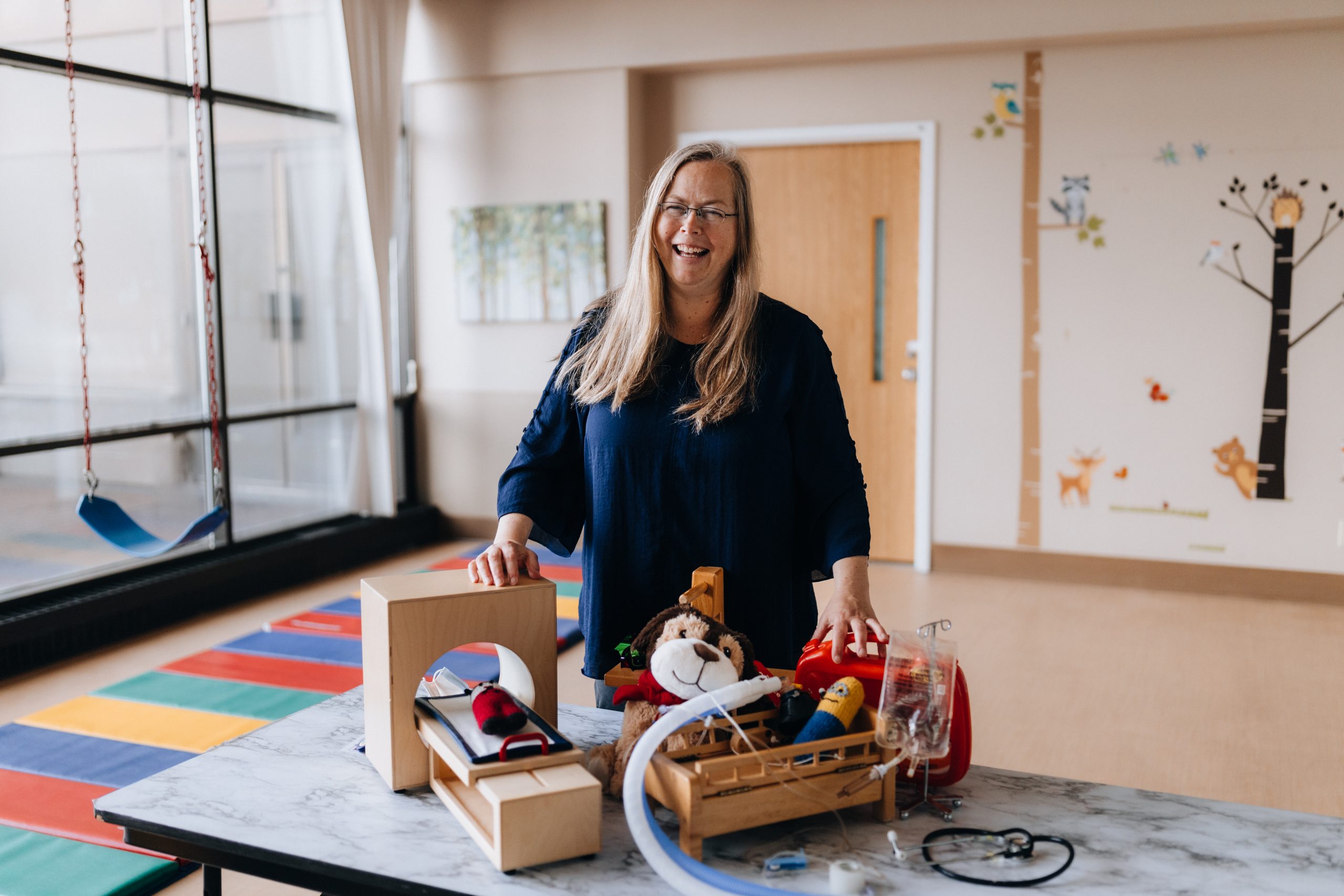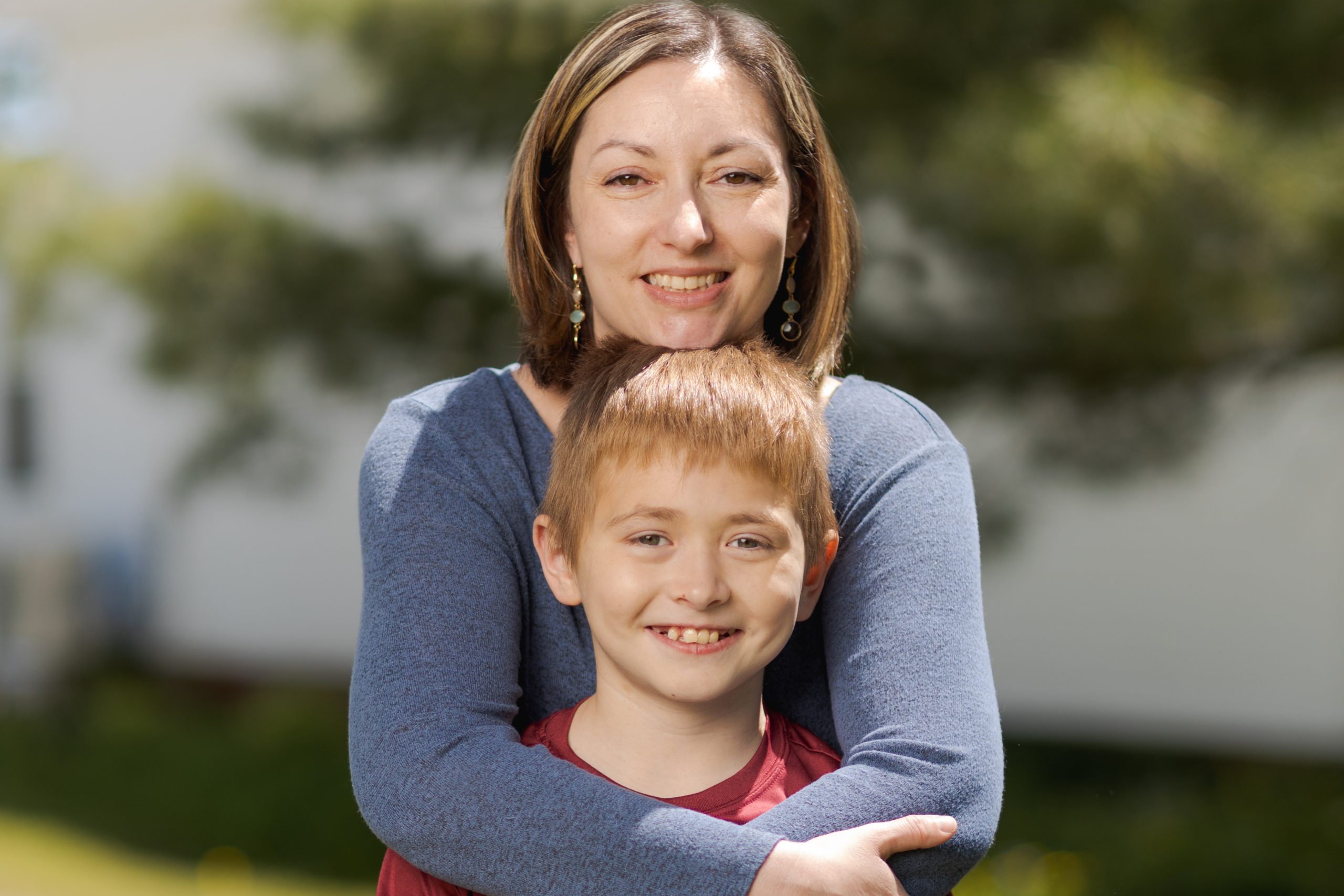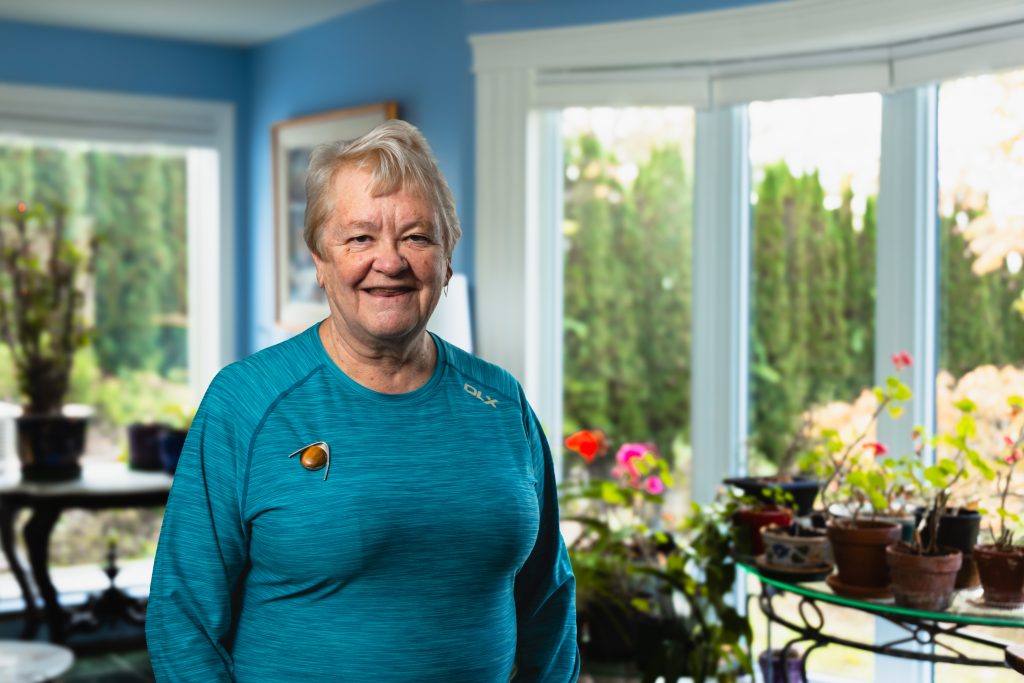News & stories, Improving Care Through The Power of Play
August 2022
The ‘fun lady’ helps kids cope with their hospital stays thanks to donor support of the Saint John Regional Hospital's Child Life Program.
Every four weeks, nine-year-old Paul McShane leaves his home in St. Stephen for a day at Horizon's Saint John Regional Hospital to receive an infusion. After nearly three years, these monthly trips to Saint John have become part of the family’s household routine. And while Paul stoically accepts the necessity of the treatments, his mother says they are not painless.

“The biggest thing he doesn’t like is the IVs,” Patricia McShane says. “He does not enjoy those.” What he does look forward to is seeing Beth MacNutt, the Regional’s resident Child Life Coordinator.
For Paul and the many other children she works with, Ms.MacNutt channels the therapeutic power of play to make their time at the hospital more positive.
“My job is to help children cope with their hospital experience,” she says. Along with helping distract him during the IV insertion, Ms.MacNutt keeps him entertained with games and toys during the five or six hours it takes to receive the infusion of Remicade, a medicine used to treat relapsing polychondritis, a chronic disease that attacks the cartilage. Paul was diagnosed with it when he was six.
For 26 years, Ms.MacNutt has held this role at the hospital. Her name is practically synonymous with the program, where she’s a one-person tour de force for family-centred care.
“It’s such a privilege and an honour to work with these children and their families at a time when they are often in crisis or a difficult place,” she says. “I do it for the patients and their families.”
Ms. MacNutt says it’s the best job in the hospital. “I’m the fun lady,” she says. “Who else gets to play every day?” The idea that play is beneficial for children in hospitals has been around for decades. In 1974, the former Saint John General Hospital launched its first child life program.
A group of so-called “play ladies” would do what their informal title suggests: play with pediatric patients in the department’s playroom. Those early play ladies were volunteers, but in the 1970s and 1980s, as child life programs expanded across North America, the field grew into a profession. Ms. MacNutt, who has a background in child growth and development, was the Regional’s first certified child life specialist.
Today, she says, a child life program is an indicator of excellence in pediatric care and part of the standard of care across Canada and beyond.
“Child life has really evolved over time,” she says. “Play is still the program’s foundation because play is how children learn and grow. But we use what I call ‘play with a purpose.’”
Her toolkit includes medical play, which might involve having young patients rehearse for a procedure to take away the unknowns, so they know what to expect. She uses play to teach coping skills and reframe challenging hospital experiences.
Sometimes, if a child is tense or worried, she’ll have them blow bubbles or pinwheels to harness the naturally calming power of the breath.
"When you think about kids’ emotional and social needs, play has such an important role."
-Beth MacNutt, Child Life Coordinator
Despite the professionalization of her field and its grounding in extensive research, Ms. MacNutt says many people still don’t fully understand or appreciate the value of play. Along with well-documented contributions to learning and development, it has numerous therapeutic benefits.
The Regional’s Child Life Program supports children of all ages, from infancy to 18, when most patients age out of pediatrics. Some, like Paul McShane, Ms. MacNutt gets to know over the years. Others are admitted for the short-term, for acute care.
While their ages, medical conditions and treatments vary widely, what unites her patients and their families is often fear of the unknown. And fear and pain are closely linked.
“We’re implementing all the strategies that research shows are best to support that child in coping and resiliency down the road,” she says. “As children learn these skills, they’ll hopefully transfer to other challenging life events.”
Along with pediatric patients, she also occasionally works with children with sick loved ones in the hospital, helping to prepare them for visits and making the sterile setting more inviting, such as by putting a hand-crafted quilt over the standard hospital linens.
With a focus on family-centred care, she also supports parents and caregivers, sharing techniques, such as comfort holds, that they can use to help soothe their child during a challenging procedure. And she sometimes uses some of the same role-playing games and other techniques with adult caregivers.
“Parents don't always know what to expect,” she says. “Being able to support the parents so they’re better able to support their child is a better experience all around.”
She says she sees the difference her program makes every day, “with her own eyes.” The proof is in the smiles on the faces of young patients when she walks into the room. She sees it in her colleagues, too.
“If you can minimize the fear and uncertainty, the kids recover more quickly,” she says. The first goal of the program is to support a successful medical procedure, whether that’s drawing a blood sample, inserting an IV, running a diagnostic test, or other interventions, with the least trauma and negative impact on the child and their family.
Beyond a more positive and pleasant hospital experience, Ms. MacNutt aims for a more empowering one. Her play techniques can help patients reframe their experiences.
Instead of being passive recipients of health care, the Child Life Program makes the children actively involved and engaged in their care, which helps them now, and in the future.

"My health-care team recognizes the value of play,” she says. “They know that if they go into a child’s room to do an assessment and that child is in the fetal position, bawling, they need the support of child life.”
Many of the Lego blocks and stuffed animals, poppits and action figures, dolls, puzzles and games that fill Beth MacNutt’s toolkit are donated by the community.
The Saint John Harley Owners Group has been a longtime supporter of the Child Life Program. Its annual Lana Sherwood Memorial Toy Run, which celebrated its 26th year in 2021, has collected thousands of toys in that time. And every year, they make a donation – typically ranging from $1,500 to $2,000.
For kids like Paul McShane, these toys make their hospital experiences a lot easier. “It’s the most pleasant part of the treatment,” Ms. McShane says. “It really does brighten up his day and gives him a little something extra that he can enjoy while he’s there.”
Ms. McShane marvels at how personalized the Child Life Program is and heaps praise on Ms. MacNutt. “She remembers everything about him, she knows everything Paul likes,” she says, including Pokémon, Roblox and Minecraft. “If she sees something that will make his stay at the hospital better, she saves it just for him. And he loves it. It just really makes his day.”


